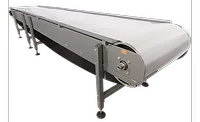Exclusive interview: Chromatic Technologies Inc. on product tampering



Food Safety Strategies recently was able to speak with Patrick Edson, chief marketing officer for CTI (Chromatic Technologies Inc). CTI recently launched high-tech inks to reduce product tampering and counterfeiting.
Liz Parker: How does the BlindSpotz technology work, in relation to food safety?
Patrick Edson: Over $65 billion is spent each year on (1) maintaining a cold-chain, (2) monitoring food safety and (3) complying with regulatory requirements, but there has been NO technology to provide inspection at the package or case level for detecting freeze or heat damage, proper pasteurization (retort and HPP) or tampering. The focus on quality and safety has been on documentation and demonstrating the process was followed. Heretofore, the huge gap in safety and quality management was the inability to look at a vaccine vial, a pack of meat or a box of tomatoes and answer, “Is everything okay?”
BlindSpotz on-pack sensor technology was designed to create accurate, reliable and low-cost sensors that can be printed for a few pennies on finished packaging as part of the existing graphics printing process. BlindSpotz technology currently monitors compliance with cold chain, including freeze and thaw alerts, no <2 C° and no >8 C° , and warming alerts tunable from 5 C° to 25 C° (+/- 1 C° for most technologies).
The other breakthrough is in validating high-pressure processing (HPP). BlindSpotz HPP verification technology measures the difference between 70K, 80K and 87K PSI and identifies short cycles under 1 minute at 87K PSI and can confirm the proper fill temperature of HPP machines.
All of these technologies may be printed on film, paper, plastic, usually in UV or waterbase, or can also be purchased in individual labels.
LP: How is it valuable for the food industry – and in particular, food safety?
Looking for quick answers on food safety topics?
Try Ask FSM, our new smart AI search tool.
Ask FSM →
PE: The food industry needs an audit and inspection tool of package level for food safety and quality. In food distribution, there are many stops and transfers in the supply chain, but there’s not a good inspection tool to identify if the food was handled correctly prior to the hand-off. With printable sensors on packaging, a food distributor or restaurant can easily accept or reject a delivery by simply confirming a checkmark or “OK” is visible.
The other big change is the requirement of FSMA for smaller companies. The intent of FSMA is on “preventing food safety problems.” With on-pack diagnostics, every person in the supply chain becomes a member of the safety and quality team. Everyone in packaging, warehousing, distribution and sales can be a new set of eyes to quickly identify if a pallet has a problem BEFORE it reaches the consumer. If a pallet of mayonnaise is frozen or a few packs of meat bypass the HPP machine, it will be quickly identified. In both cases, the ability to avoid a customer having a bad experience with food quality could be the difference between a happy customer and getting kicked out of an account.
LP: How are companies using on-pack sensor technology to improve safety and quality?
PE: Food companies are using BlindSpotz to identify if frozen meat, bread or dog food thawed out during shipment, and using the freeze and warming alerts to track produce quality. Additionally, the HPP verification is a tool to monitor internal quality and for customers to monitor third-party tollers. The technology is also popular for monitoring the supply chain of pharma and chemicals.








